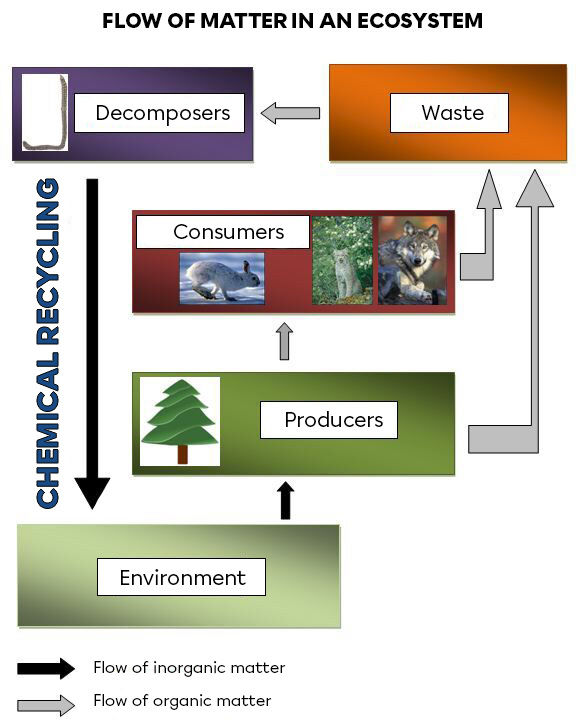Trophic relationships refer to feeding relationships between living organisms in the same ecosystem.
In any ecosystem, there are 3 trophic levels: producers, consumers, and decomposers.
This level is represented by plants, algae, and phytoplankton. These form the first link in the majority of food chains that exist on the planet. They capture sunlight and, through photosynthesis, use this radiant energy to transform inorganic matter (water, mineral salts, and carbon dioxide) into organic matter.
All producers are able to make the food they need to live on their own. For this reason, they are called autotrophs (from the Greek auto meaning self and trophos, nourishment). The other trophic levels are rather qualified as heterotrophs since they cannot make their own food; they feed on already existing organic matter.
This level is represented by all living organisms that feed on other living organisms to survive. Different levels of consumers can be identified, up to three or four in some ecosystems.
Herbivores, organisms that feed on plants, and therefore producers, are primary consumers or first level consumers.
The hare is an example of a primary consumer.
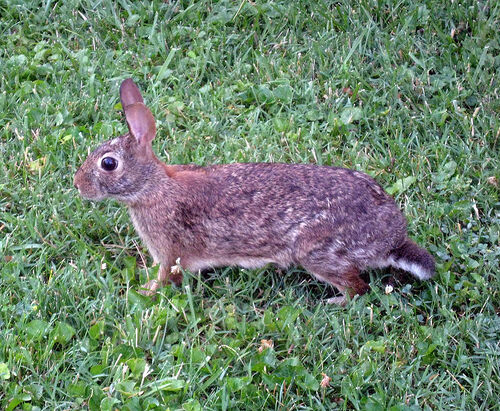
Animals that feed on herbivorous animals are secondary consumers or second level consumers. They are also called first level carnivores.
The lynx, one of whose prey is the hare, is an example of a secondary consumer.

Animals that feed on carnivorous animals are third level consumers or tertiary consumers. They are also called second level carnivores.
The wolf, one of whose prey is the lynx, is an example of a tertiary consumer.
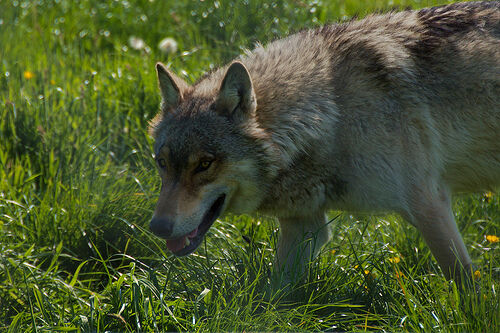
Some consumers eat both plants and animals. They are omnivorous animals. These interact with species belonging to several trophic levels at the same time.
A bear may, depending on the circumstances, feed on berries, roots, insects, fish, and small mammals. It, therefore, interacts with producers, primary consumers, and secondary consumers.
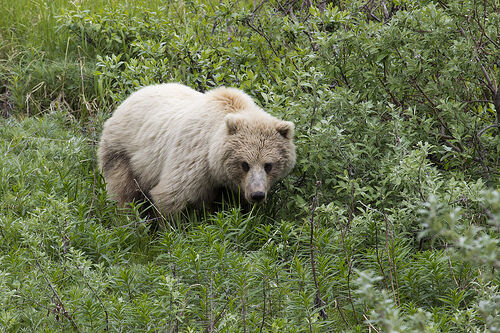
This level is represented by living organisms that draw their energy from the decomposition of dead organic matter (dead leaves, dead wood, animal carcasses, etc.) or from organic waste derived from living organisms (animal droppings, food remains, etc.). They turn organic matter into inorganic matter, which is then available to producers.
There are two types of decomposers. First, there are scavengers, such as cockroaches and earthworms, which feed only on trash. Then there are the transformers, like fungi and bacteria, which completely transform organic matter into inorganic matter.
Earthworms are an example of decomposers.
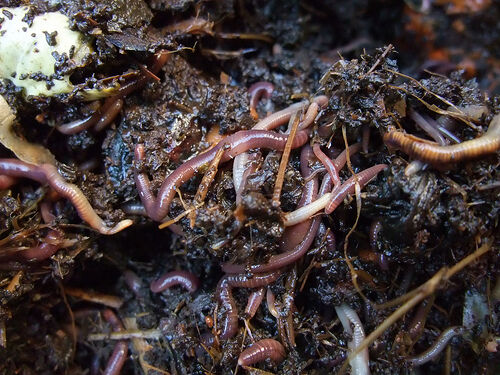
Nothing is lost, nothing is created, everything is transformed; such is the law of conservation of mass stated by Lavoisier. Matter in an ecosystem also follows this important law.
For example, the snowshoe hare, a herbivore, eats the foliage of balsam fir. The matter in this foliage is then transferred to the hare. The Canada lynx, a first level carnivore, will also absorb the matter when it eats the snowshoe hare. The wolf, a second level carnivore, will also absorb the matter when it devours the Canada lynx. The wolf will produce excrement from this matter. Not only this, but the needles of the balsam fir will also become debris when falling to the ground. The earthworms will then transform this excrement and this debris into mineral elements which can be reabsorbed by the balsam fir. Matter, therefore, constantly passes from one state to another. Matter is always circulating in an ecosystem.

Energy also circulates in an ecosystem. Sunlight is the very first source of energy. Autotrophic organisms& convert light energy from the Sun into chemical energy through photosynthesis. Consumers can then take advantage of this type of energy. The snowshoe hare stores the energy produced by the balsam fir when consuming it. The hare loses some of this energy in the form of waste and in the form of heat. The lynx benefits from the energy contained in the hare when eating it. In turn, the lynx loses some of this energy in the form of waste and heat. The energy transfer continues so on.
We must therefore continually supply an ecosystem with energy, as the energy of an ecosystem is not recycled. There is always a loss of energy from one trophic level to another.
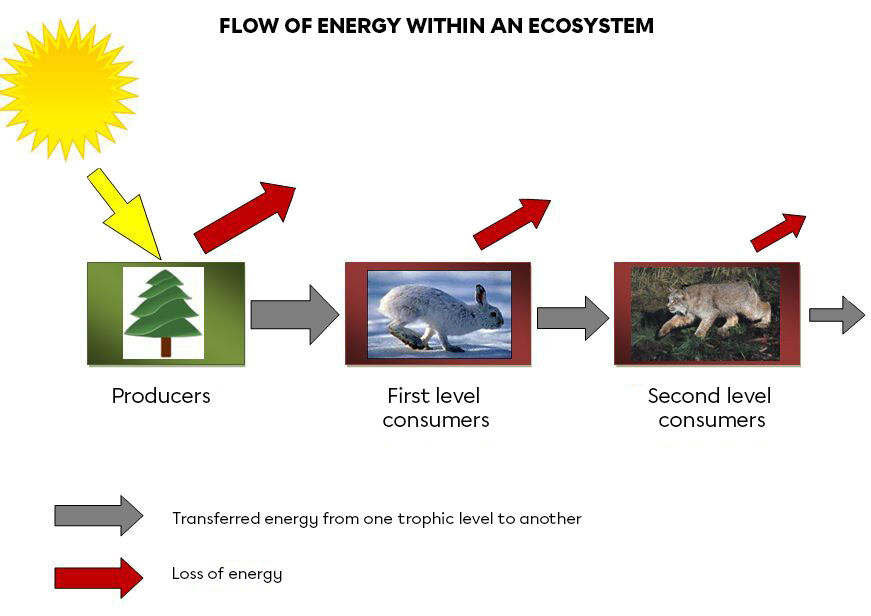
The flows of matter and energy are often represented by patterns called food pyramids or ecological pyramids.
Chemical recycling is the natural process of converting organic matter into inorganic matter by decomposers.
At each link in the food chain, there is inorganic matter waste that accumulates in the environment. The decomposers will transform the essential nutrients in the inorganic waste so that the producers can use them. Chemical recycling is closely linked to several biogeochemical cycles such as carbon, nitrogen, and phosphorus.
